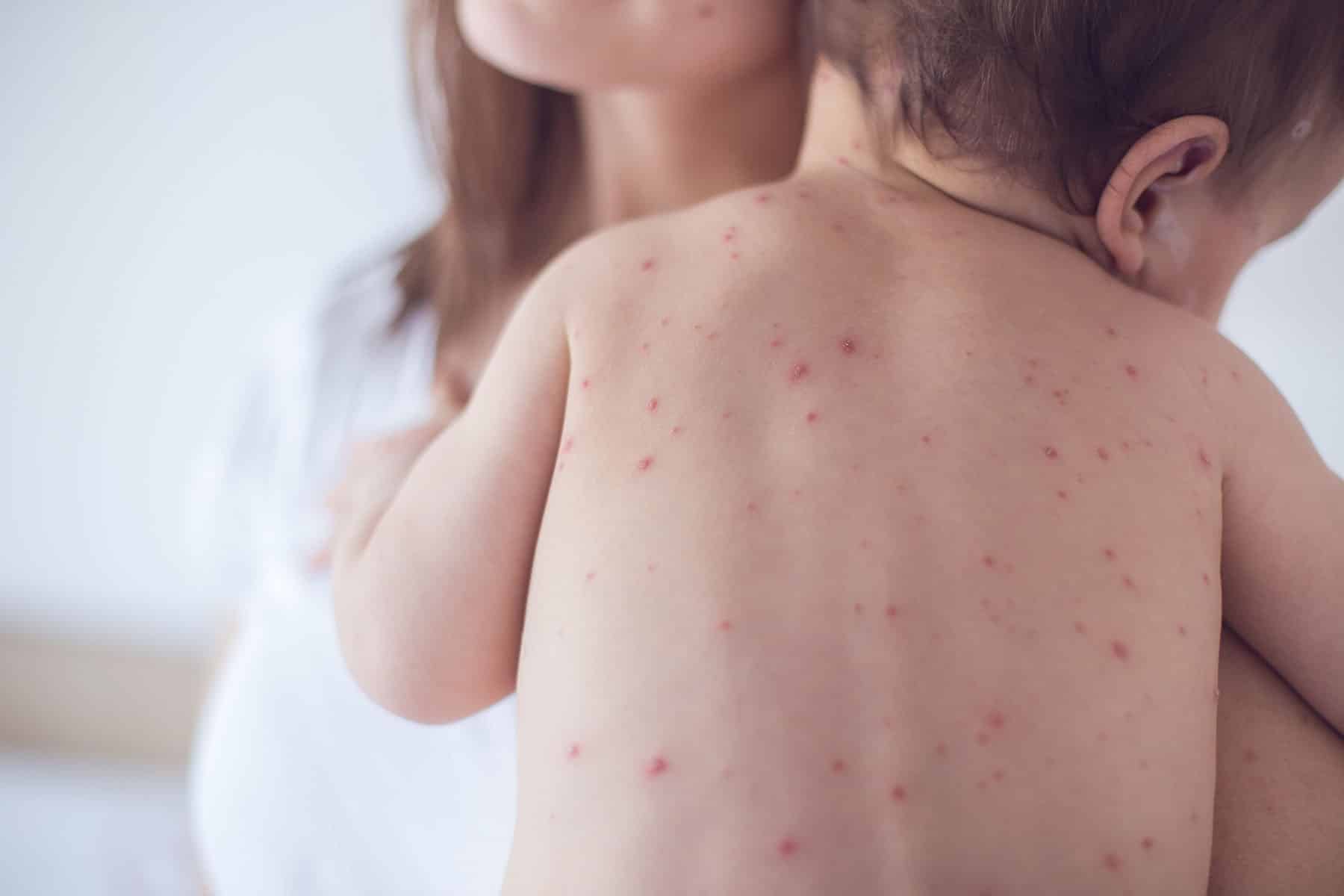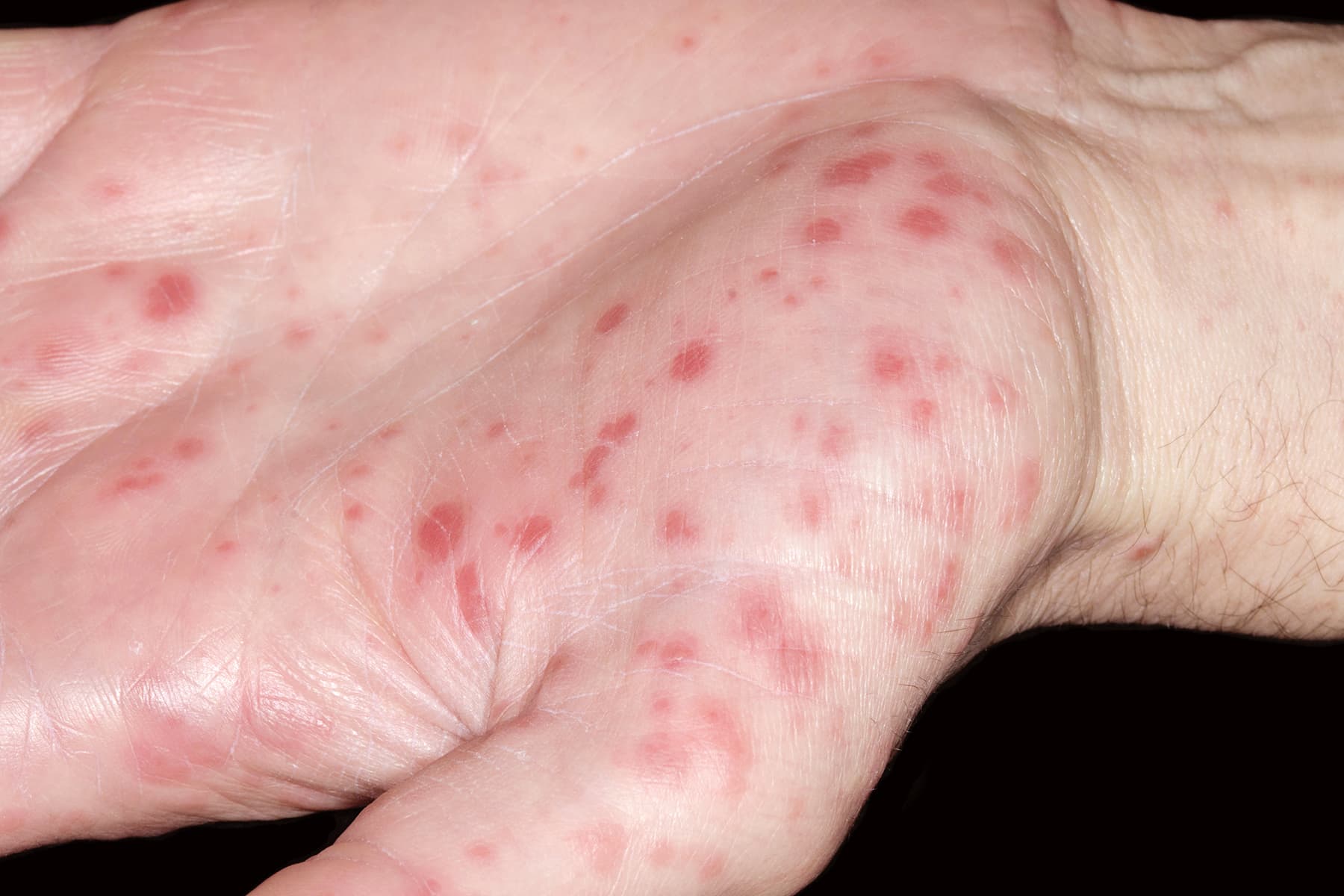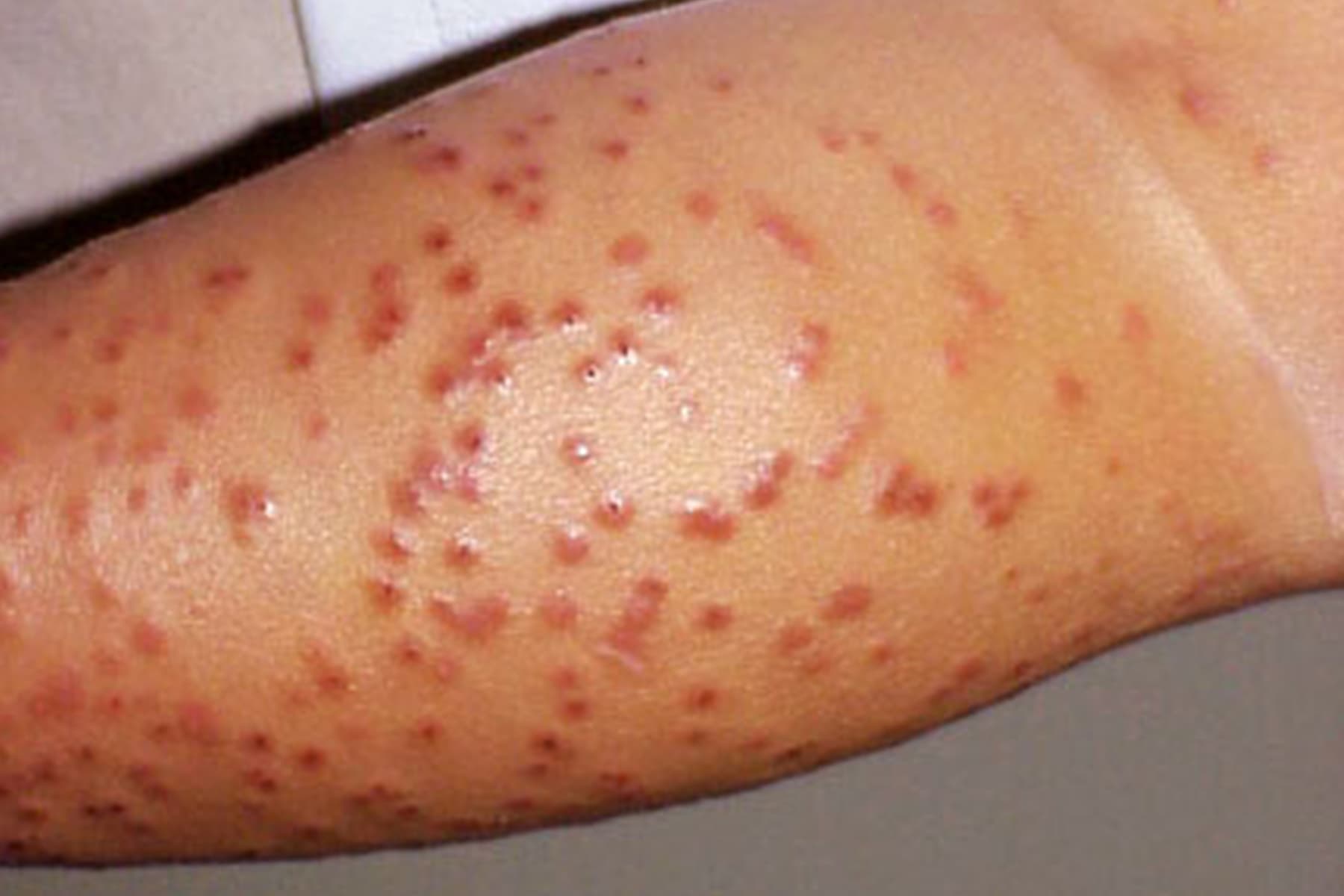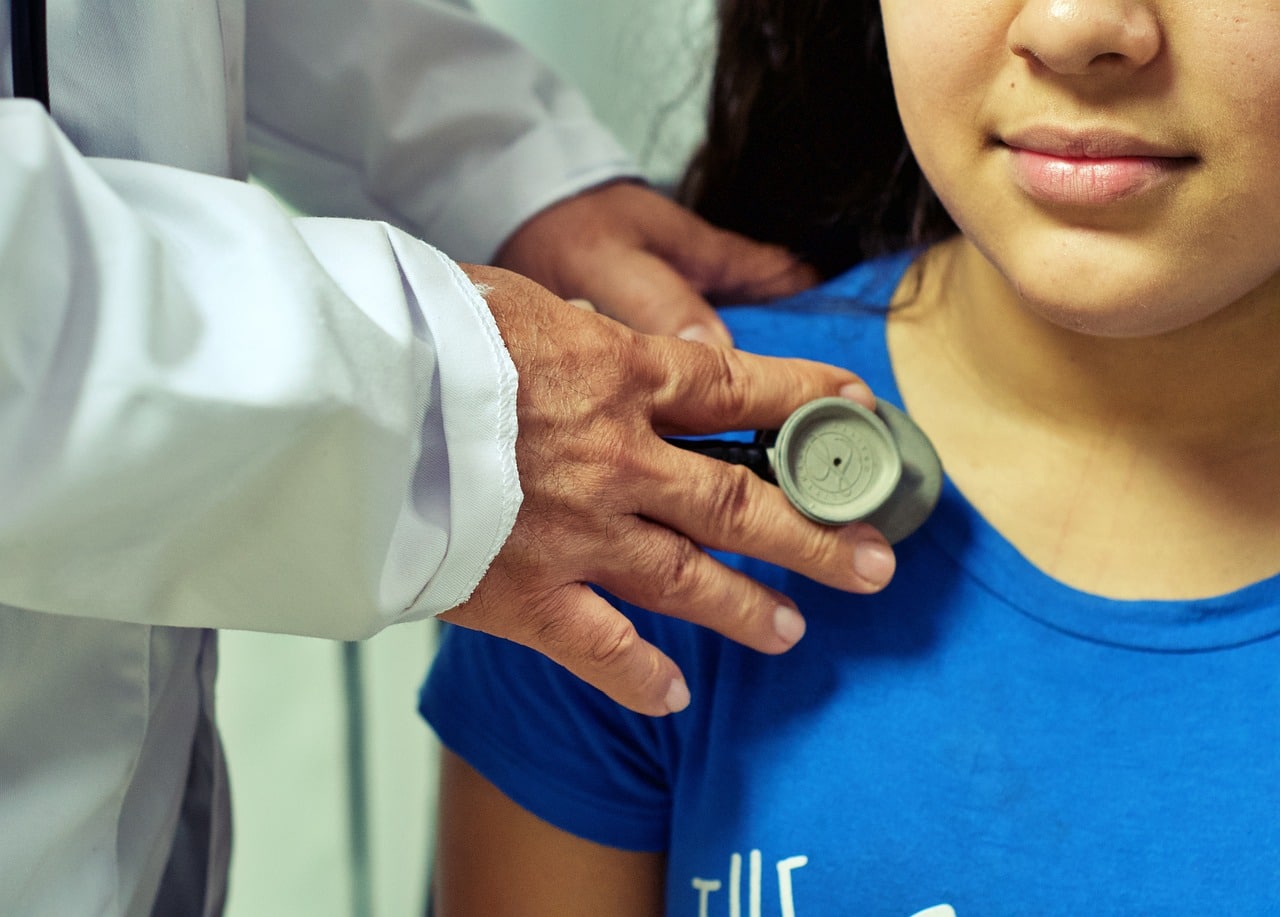
Scarlet fever is an infection caused by the group A beta-hemolytic streptococcus (Streptococcus pyogenes), a bacterium capable of producing a toxin (poison) responsible for the appearance of a typically scarlet-colored skin rash, from which the disease takes its first name.
El sore throat It is the most common manifestation of infection with Streptococcus pyogenes. In the case of scarlet fever, it is the clinical syndrome characterized by the presence of the rash associated with the infection itself (which in most cases is precisely pharyngitis). Typically, one in ten children with group A strep throat will develop scarlet fever.
At what age can you get scarlet fever?
The disease is most common in children between the ages of 5 and 15, but it can affect adults as well. The reappearance of the disease is possible, but it does not usually occur.
Unlike rubella, chicken pox and other rash diseases, scarlet fever is the only one caused by bacteria. The incubation time is approximately 2-5 days.
scarlet fever symptoms
The main symptoms of scarlet fever in children and adults are:
- throat pain,
- fever,
- red rash that feels like sandpaper to the touch,
- red skin under the armpits, elbows, and groin folds,
- whitish coating of the tongue,
- headache,
- muscle pains,
- nausea and/or vomiting,
- abdominal pain,
- swollen lymph nodes.
The prognosis is excellent, but it is important to treat the disease with antibiotics to avoid the risk of serious complications.
The following subdivision in days is purely indicative and times may vary slightly from one patient to another.

prodromal phase
Day 1
Scarlet fever has a sudden onset characterized by the following symptoms:
- high fever up to 39-40 °C (mild in younger children),
- shaking chills,
- headache,
- stomach ache,
- vomiting
- severe sore throat with difficulty swallowing,
- sometimes white tonsils,
- swollen neck lymph nodes.
Children under 3 years of age can also have nasal congestion, while infants often experience irritability and decreased appetite.
rash phase
Day 2
Within 12 to 48 hours after the onset of the sore throat (which is always severe) the rash appears. The entire face appears bright red with the exception of the area between the nose, mouth, and chin. The high fever persists.
Day 3
The tongue is initially covered with a white coating.
The tongue itself then tends to flake off, giving way to a bright strawberry or raspberry red color.
Slightly raised red spots (sandpaper-like to the touch) from face and neck to chest and extremities. They are particularly evident on the inner surface of the elbow, in the inguinal folds, and on the inner surface of the thighs.
The rash is caused by the toxin that produces the bacteria and not all patients are equally subject to it, so much so that in a family it is possible for a son to develop the rash and the brother only to develop strep throat.
Other typical symptoms of scarlet fever at this stage are:
- swollen neck lymph nodes
- stomach ache,
- headache,
- white tonsils,
- vomiting

desquamative phase
Day 6
The rash fades in about a week, followed by flaking skin that may persist for a few weeks (usually 10-14 days); at this stage itching may appear.Rash
The rash begins about 1-2 days after the onset of the typical symptoms of the infection (sore throat, fever, fatigue); the skin rash is particularly characteristic, so much so that some doctors speak of a eruption scarlatiform.
It presents as a generalized reddening of the skin with the presence of small papules that give a sensation of sandpaper to the touch; if pressed on the skin it will tend to whiten (this can be seen particularly accurately by exerting light pressure with the bottom of a transparent glass).
There may be some itching, but no pain.
Extension over time
It tends to start at the trunk of the body and then gradually widens to include the extremities (legs and arms); the palms of the hands and soles of the feet are not involved, while the face may appear flushed on the cheeks, but with a characteristic pale white halo around the mouth. As the rash progresses, the inflammation becomes more pronounced in the skin folds (groin region and armpits).
It usually ends after about a week, through a process of gradual desquamation (exfoliation of the superficial layer of the skin) that can persist for several weeks, starting on the face and then spreading throughout the body.
At the end of the peeling, the skin will have an appearance resembling a light sunburn.

contagion and incubation
Scarlet fever is the only rash disease caused by a bacterium, instead of a virus; these are in particular group A strep, the same bacterium that causes strep throat.
It affects men and women in the same percentage, with the most affected age group being between 5-15 years.
La incubation of scarlet fever usually varies from 2 to 5 days, but there may be more extreme cases (1-7 days).
Transfer
The bacterium responsible for scarlet fever is very resistant to environmental conditions (temperature, humidity,...) and is mainly transmitted through the air through saliva, but it also resists for a long time in everyday objects such as crockery, books and infected children's toys.
Therefore, it is capable of spreading by contact through secretions from the respiratory tract, but cases of contagion through infected food or skin infections have been reported.
Generally, a patient is contagious from 1-2 days before the onset of symptoms, If adequate antibiotic therapy is instituted, the patient is no longer contagious (and therefore can return to school or work) 24-48 hours after the first dose; otherwise, he remains infectious for two to three weeks after the onset of symptoms.
Cases of asymptomatic carriers
There may be cases of healthy carriers, that is, subjects who do not present symptoms despite being able to infect other people.
Finally, we remember the risk of indirect transmission by sharing clothes, towels, games...
In the case of rash disease, skin symptoms and a red tongue are due to a reaction in the body to a toxin produced by the bacteria. Not all strep bacteria produce this toxin and not all children are sensitive to it.. Two children in the same family can get strep infections, but one child (sensitive to the toxin) may develop the typical scarlet fever rash, while the other may not.
Duration
When fever occurs, which lasts 3 to 5 days, it is due to a throat infection that disappears within a few days of starting antibiotic therapy.
The scarlet fever rash usually clears up by the sixth day after the sore throat begins, but the skin that has been covered by the rash may begin to flake off. This peeling can last up to 10 days.
With antibiotic treatment, the infection usually clears up within 10 days, but swollen tonsils and glands can take a few weeks to return to normal.
Infected children should stay home from school or day care for at least 24 to 48 hours after the first dose of antibiotic.
Factors riesgo
About 80% of scarlet fever cases occur in children under the age of 10, mainly in the 2-8 age group, although it is possible to contract the disease at any age.

When to call the pediatrician
We should call the doctor when the little one develops a sudden skin rash, especially if it is accompanied by
- fever,
- throat pain,
- or swollen lymph nodes.
Although scarlet fever itself has a benign course, antibiotic treatment is essential to avoid the risk of dangerous complications.
Complications
If diagnosed early and treated with antibiotics, the disease usually resolves without complications and the prognosis is excellent (4-5 days).
Scarlet fever, like all infections caused by β-hemolytic streptococci, can lead to various complications:
- rheumatic fever, an inflammatory disease that can affect:
- heart,
- joints,
- leather
- and brain,
- kidney disease (such as an inflammation of the kidneys called post-streptococcal glomerulonephritis),
- ear infections (otitis media),
- skin infections (cellulitis),
- throat abscesses,
- pneumonia (lung infection),
- arthritis (inflammation of the joints).
Most of these complications can be prevented by treatment with antibiotics.

Pregnancy and scarlet fever
scarlet fever in pregnancy No. causes fetal malformations and the possible contagion at the time of delivery, through contact with a possible vaginal colonization, is decidedly unlikely, if not impossible.
Instead, there is a risk of preterm labor, again only if the infection also affects the vaginal tract.
In general, therefore, it is advisable to avoid unnecessary exposure to contagion, but it is not necessary to be alarmed in case of infection or contact with patients with scarlet fever. However, it is advisable to inform the gynecologist to evaluate with him a possible vaginal swab and/or antibiotic coverage.
Diagnosis
Diagnosis is made essentially by medical examination, especially in the presence of the characteristic rash, and possibly after confirmation with a throat swab.
Finally, the doctor may also order blood tests related to the antistreptolysin (TAS) titer, which increases progressively over the next 2-3 weeks. It should be noted that the TAS will always remain positive after the first contact with strep, therefore the result should always be interpreted with the help of a pediatrician/physician to distinguish current from past and past infections.
Transmission
If your child has a rash and the doctor suspects scarlet fever, they may do a throat culture (a painless smear of throat secretions) to see if the bacteria are growing in the laboratory, or a faster smear in the clinic.
Once the infection is confirmed, your pediatrician will likely prescribe an antibiotic. The drug of first choice is usually amoxicillin with clavulanic acid (eg Augmentin® ), but eg clarithromycin may be used as an alternative.
The fever will probably go away in 24 hours. and the child will no longer be contagious at that point, but it is essential to continue the treatment to the end to ensure that the infection is completely eradicated and thus not run the risk of developing rheumatism fever. Antibiotic treatment can also slightly reduce the duration of other symptoms.

Other remedies
A child with strep throat may find it painful to eat, so it is necessary to offer soft food or, if necessary, a liquid diet. Includes relaxing hot tea and nutritious soups, cold drinks, shakes and ice cream. Make sure your child drinks plenty of fluids.
Using a humidifier to add moisture to the air can help soothe a sore throat, while a warm, wet towel can help soothe swollen glands around the baby's neck.
If the rash itches, make sure your child's fingernails are trimmed so the skin doesn't get scratched.
Prevention
There is no vaccine to prevent strep throat or scarlet fever and there is no sure way to prevent infection, so when a child is home sick it is recommended avoid sharing cutlery and glasses to eat and drink, then wash them well with hot, soapy water.
Frequent and thorough hand washing is essential.